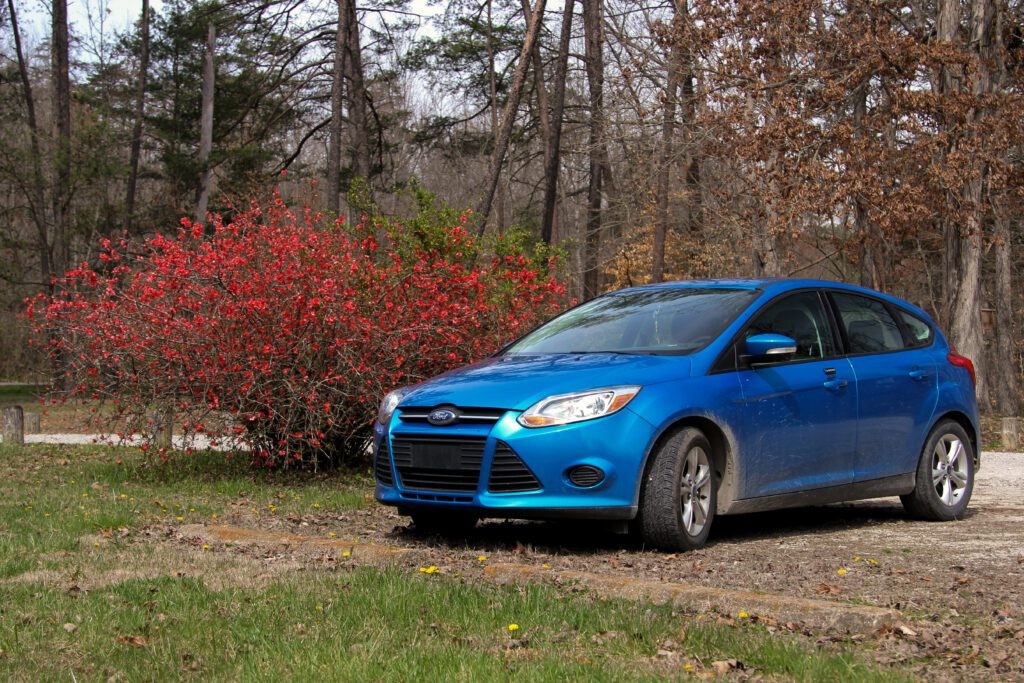For RV enthusiasts, the open road is calling, and the ability to bring along a separate vehicle adds a dimension of freedom and convenience to any旅程. Flat towing, or four-down towing, is a popular method, celebrated for its simplicity and minimal equipment needs. However, the crucial question arises: what is the best vehicle to tow behind an RV? This guide, crafted for the discerning RVer, delves into the specifics of flat towing, helping you identify the ideal towable vehicle to complement your RV lifestyle.
Understanding Flat Towing: The Basics
Flat towing, often called “dinghy towing” or “four-down towing,” involves towing a vehicle with all four wheels on the ground, directly behind your RV. Connected by a tow bar, the towed vehicle seamlessly follows your RV, offering unparalleled convenience upon reaching your destination. Imagine arriving at your campsite and immediately having the freedom to explore local attractions, run errands, or venture off the beaten path – all thanks to your readily available towed vehicle.
Is Your Current Car Flat Towable? Key Considerations
Before setting your sights on the open road with a towed vehicle, it’s vital to determine if your current car, or one you’re considering, is suitable for flat towing. Historically, a wide array of vehicles were flat towable. However, modern automotive engineering, particularly the rise of automatic transmissions and advanced drivetrain systems, has narrowed the list. Towing an incompatible vehicle can lead to severe transmission damage, resulting in costly repairs.
Manual Transmission vs. Automatic: The Deciding Factor
If your vehicle boasts a manual transmission, you’re in a potentially favorable position for flat towing. Many front-wheel-drive vehicles with manual transmissions are inherently flat towable without modifications. Generally, vehicles with rear-wheel drive and manual transmissions, or four-wheel-drive systems featuring a neutral transfer case, can also be flat towed.
The definitive answer, however, lies within your vehicle’s owner’s manual. Manufacturers explicitly state whether a vehicle is approved for flat towing, outlining any specific procedures or limitations in the “Recreational Towing” section. Always consult this manual to confirm your vehicle’s flat towing compatibility.
The Challenge of Automatic Transmissions and CVTs
The increasing prevalence of automatic transmissions, continuously variable transmissions (CVTs), front-wheel drive, and sophisticated four-wheel-drive systems has significantly reduced the number of flat towable vehicles. Vehicles equipped with CVTs are generally not flat towable. The mechanics of a CVT, when subjected to the rotational forces of towing without the engine running, can suffer irreparable damage. Similarly, many modern automatic transmissions lack the internal lubrication necessary for flat towing, leading to overheating and failure when the driveshaft is turning for extended periods.
Aftermarket Modifications: Proceed with Caution
If your preferred vehicle isn’t factory-approved for flat towing, aftermarket modifications might seem like a solution. While some automatic transmission vehicles can be adapted for flat towing with aftermarket add-ons, this path demands caution. These modifications can be expensive, complex to install and maintain, and potentially void your vehicle’s warranty if not implemented or used correctly. Damage caused by improper towing, even with modifications, might not be covered.
For those actively seeking a flat towable vehicle, prioritizing models explicitly approved by the manufacturer for four-down towing is the most prudent approach. If modification is considered, seeking professional guidance is essential to ensure compatibility and safety.
Essential Checks Before You Hit the Road: Flat Towing Preparation
Once you’ve confirmed your vehicle’s flat towing capability, several crucial checks are necessary before each journey to ensure safe and uneventful towing:
- Steering Lock: Most vehicles have steering locks engaged when the ignition is off. Flat towing necessitates an unlocked steering wheel for the vehicle to follow the RV’s path. Typically, unlocking the steering requires the key to be in the ignition, set to the “accessory” position. Always verify this procedure in your owner’s manual.
- Fuse Removal: Some flat towable vehicles, particularly certain cars and SUVs, require specific fuse removals to prevent battery drain or system malfunctions during towing. Again, your owner’s manual will detail any fuse removal requirements.
- Transmission and Transfer Case Positioning: Certain four-wheel-drive trucks with automatic transmissions must be flat towed with the transmission in “Park” and the transfer case in “Neutral.” Adhering to these specific settings is critical for preventing damage.
- Model Year Specifics: Don’t assume that because an older model of a vehicle was flat towable, a newer version will be as well. Automotive technology evolves rapidly. Always verify flat towing suitability for the exact year and model of the vehicle you intend to tow.
- Auxiliary Braking Systems: Safety is paramount in RVing, and auxiliary braking systems are a vital component of safe flat towing. Most states and provinces mandate auxiliary braking systems that synchronize with the RV’s brakes, applying the towed vehicle’s brakes simultaneously. Even where not legally required, these systems are indispensable for reducing stopping distances and enhancing overall safety. Invest in a quality auxiliary braking system for peace of mind.
Top Vehicle Types for Flat Towing: Finding Your Perfect Match
Choosing the best vehicle to tow behind your RV involves considering your individual needs and travel style. Here’s a breakdown of popular vehicle types and their advantages for flat towing:
Compact Cars: Lightweight and Economical Towing
Alt text: Blue Ford Focus being flat towed behind a motorhome, showcasing a compact car as a lightweight towable vehicle option.
Compact or subcompact cars, like the Chevrolet Sonic or Ford Focus (check specific model years for flat tow compatibility), offer significant advantages as flat tow vehicles. Their lightweight nature minimizes strain on your RV, contributing to better fuel economy and handling. Cars are also generally more fuel-efficient and easier to maneuver in urban environments once you’ve reached your destination. If affordability and practicality are key, a compact car can be the best vehicle to tow behind your RV.
4x4s: Adventure-Ready Towing
The Jeep Wrangler, in its various iterations (JK, JL, TJ 4×4), stands out as a perennial favorite among RVers seeking a rugged and highly capable flat tow vehicle. 4x4s, particularly Jeeps, are synonymous with off-road adventures. Bringing a 4×4 along on your RV trip opens up a world of exploration beyond paved roads. Jeep Wranglers are renowned for their flat towing ease and the added benefit of removable tops and doors, enhancing the open-air experience when exploring your destinations. For adventurous RVers, a 4×4 is often considered the best vehicle to tow behind an RV for its versatility and fun factor.
SUVs: Spacious and Versatile Towing
Alt text: Jeep Grand Cherokee SUV flat towed behind an RV, illustrating the spaciousness and versatility of SUVs as towable vehicles.
SUVs like the Jeep Grand Cherokee, Buick Enclave, or Chevrolet Equinox (again, verify specific model year compatibility) provide a balance of space, comfort, and capability. If you travel with family or require extra cargo room, an SUV offers ample interior space for passengers and gear. Many SUVs also offer 4×4 or all-wheel-drive options, providing enhanced traction and all-weather capability. Flat towing an SUV gives you the convenience of a spacious vehicle for daily driving and the potential for light off-road excursions, making them a strong contender for the best vehicle to tow behind your RV for families and those needing extra space.
Trucks: Cargo Capacity and Towing Power
Trucks, such as the Ford F-150, Chevrolet Silverado, or GMC Sierra (4×4 models often preferred and check for flat towable years), bring a different set of advantages to the flat towing equation. The most significant benefit is the expansive cargo bed, perfect for hauling bulky items, camping gear, or outdoor equipment. Trucks also offer a robust and capable platform, and many 4×4 truck models are well-suited for off-road adventures. While larger and heavier than cars or SUVs, a truck as a flat tow vehicle provides unmatched cargo capacity and a rugged appeal. For RVers who prioritize hauling capacity and off-road prowess, a truck might be the best vehicle to tow behind their RV.
The Undeniable Benefits of Flat Towing
While tow dollies and four-wheel trailers offer alternative methods for bringing a vehicle along, flat towing presents compelling advantages. Trailers and dollies involve additional costs for purchase and upkeep, require storage space both at home and at campsites, and add complexity to the hitching and unhitching process.
Flat towing, in contrast, requires minimal, easily storable equipment. Tow bars and related accessories are compact and readily managed. The speed and simplicity of connecting and disconnecting a flat tow setup save valuable time and effort, allowing you to quickly transition from driving your RV to exploring in your towed vehicle. For convenience and ease of use, flat towing is often the preferred method for bringing a vehicle on RV adventures.
Expert Tips for Seamless Flat Towing
For both novice and experienced flat towers, these pro tips enhance safety and towing confidence:
Avoid Backing Up with a Towed Vehicle
Alt text: Patriot Brake system installed in a flat towed vehicle, highlighting the importance of auxiliary braking systems for safe RV towing.
Resist the temptation to back up your RV, even slightly, while the tow bar and vehicle are connected. Backing up with a flat towed vehicle can exert immense stress on the tow bar, potentially bending or jamming it, and causing damage to both the RV and the towed vehicle. If maneuvering requires backing up your RV, always disconnect the towed vehicle first to prevent costly damage.
The Necessity of a Tow Brake
An auxiliary braking system, often referred to as a “dinghy towing brake” or “tow brake,” is not merely a recommended accessory – it’s a crucial safety component and often a legal requirement. A tow brake system, like the Patriot Brake, applies the brakes in your towed vehicle in synchronization with your RV’s brakes. This significantly reduces stopping distances, preventing excessive strain on the RV’s braking system and minimizing the risk of accidents. Auxiliary braking systems are frequently mandated by law across North America, and investing in a reliable system is essential for both safety and legal compliance.
Blue Ox: Your Trusted Partner for Flat Towing Excellence
Blue Ox stands as a leader in towing solutions, offering a comprehensive range of tow bars designed to meet diverse towing needs. With towing capacities spanning from 6,500 to 15,000 lbs, Blue Ox tow bars accommodate a wide spectrum of towable vehicles. Premium models feature extended legs for increased clearance between the RV and towed vehicle and patented non-binding latches for effortless disconnection, even on uneven terrain. Blue Ox baseplates set the industry standard with their clean, removable tab design. Complement your Blue Ox tow bar with the Patriot Brake system for complete towing confidence, ensuring regulatory compliance and safe arrival at every destination. Explore the Blue Ox range today and embark on your RV adventures with the best vehicle to tow behind your RV and the industry’s finest towing equipment.

